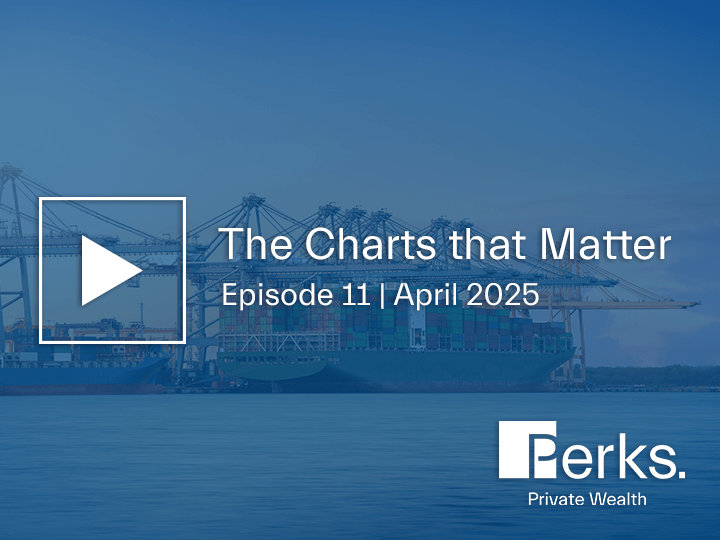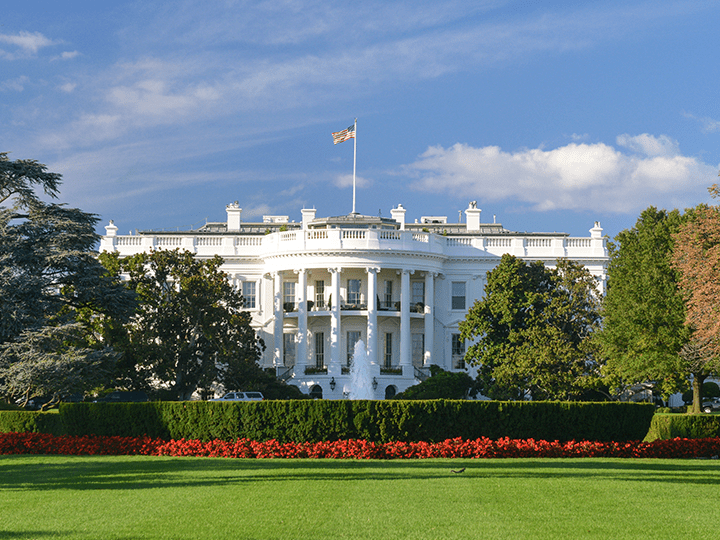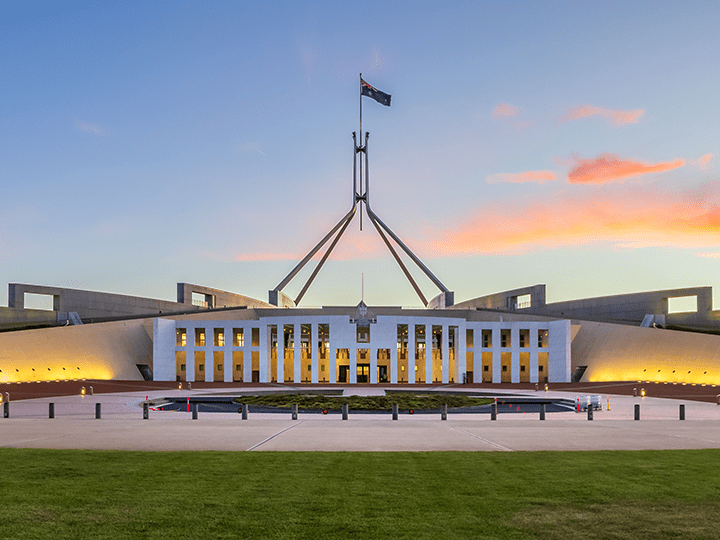Simon Hele
Welcome to this edition of the charts that matter. I’m Simon Hele, and I’m joined by the chair of our investment committee, Christo Hall. Christo, welcome.
Christo Hall
Thanks, Simon. Good to be here.
Simon
Christo, why have share markets sold off so dramatically over the last week?
Christo
Yeah. So it’s all been really in reaction to Donald Trump’s tariffs that he’s imposed on many countries around the world and to varying degrees and that’s still unfolding as we speak now.
But those implications for putting those tariffs on those countries is going to be quite meaningful, as it stands today, with regard to the impact on economic growth for both the US and the world, including Australia. And obviously, that has an impact on corporate profitability, which is affecting share prices today.
Simon
So if we go back to basics, what is a tariff?
Christo
Yes. Essentially a tariff is just a tax that’s put on a foreign country that’s importing goods into another country. In this case, the US.
And in this case, we’ve obviously seen a broad 10% baseline tax that’s been placed by the Trump administration on most countries but a real focus on those that have had a deficit with the US trading standpoint. And essentially, the bigger the deficit, in the President’s eyes, the higher the tariff has been imposed. And that’s why we’ve seen China, particularly, being singled out for treatment here. And as we stand, it’s currently looking at 104% tariffs, which are going to be applicable to China.
Simon
So who actually pays the tariff?
Christo
Yes. The tariff initially is just paid for by the importing company when they pay for the goods–
when they arrive at the US.
the company then has to decide what they do with that additional cost–
to pass on to the consumer or whether to wear that within their own cost structures. But that invariably leads to a lowering of their profit margins and corporate profitability.
So does President Trump’s rationale make sense?
Not really. So he’s looking at this basically through the lens of, well, which countries have a deficit with the US. So therefore from a trade perspective–
and therefore we need to square the ledger up. But the reality is that countries around the world can be imbalanced and/or have surpluses with some countries and deficits with others, but the issue for the US is without having these low cost structures from countries like China, et cetera, they wouldn’t have been able to enjoy the low inflationary conditions that they’ve enjoyed for many years now through three globalization.
So it’s all about comparative advantage–
what we call comparative advantage. And basically, for example, Italy might be good at making great pastas that are cheaper than the US, and that’s great. So as a consumer, you get great pasta for a cheaper price.
Swiss might make better watches cheaper–
things like that. And then they import–
they export them to the US. So the US, along with all countries, have been major beneficiaries of having these free trade agreements, essentially, until now. And that’s why economies and markets have done so well over the long period because we’ve been really devoid of any of this activity for a long time now, until recently.
Simon
So what’s the economic impact of tariffs?
Christo
Yes. The impact is higher prices essentially for consumers. If we go back to what I was saying before about who pays the tariff, invariably it will be the consumers, so it’s inflationary. That’s the big challenge.
And when you have higher prices that are being paid by consumers, you tend to have a fall in demand because eventually, you reach that stage where people just stop buying the product because it’s too expensive. And that’s when you start seeing the real impacts on the economy because you have falling sales revenue for companies.
And you’ve also got falling profit margins because they’re wearing the cost of the tariff as well. So the markets then obviously look at the whole corporate profitability spectrum.
And there are multiple industries that have been impacted by this–
and sectors. So it’s very far reaching.
– You touched on inflation before. What’s likely to play out there, and what does it mean for interest rates?
– So I think it is very much a short-term inflationary hit because the prices take effect pretty much immediately once the tariff date is executed, which is, now, essentially, for some countries. Although as we are filming today, we have just received a 90-day extension, but it’s all about the negotiation during that period. But when tariffs do take effect, the price impact is immediate.
So you get that inflationary hit straight away that flows through. So that’s the first point. The second point is if you have that impact, what does it mean for interest rates? And it makes it obviously much harder then in the short term for the central banks to cut interest rates. They have to wait and see that demand effect really fall off due to higher prices before they will cut rates.
So the rate cutting trajectory is really interesting because the markets will be very focused on that.
And I think the central banks are going to be watching very, very carefully. But my personal view is I don’t think they’re going to go really hard and cut aggressively straight away because they just don’t know, a, what the next moves will be, and B, they want to see the impact first. They’re very much data driven. They’re evidence-based.
They’re not doing it on speculation or what may be. They’re thinking about what has happened. So you need to be very conscious of that. And of course, following on from that–
and that will determine where valuation prices sit based on the magnitude of the impact of the slowdown in the global economies.
Simon
So what should we be looking for in the months ahead in terms of developing stories and all that?
Christo
Yes. So I mean, we don’t know, and no one knows is the key point. We can sit here and give our opinions, but no one knows what’s going to happen. Anyone that says that I think is just not really being truthful.
We don’t know what the President’s going to do here with regard to the magnitude of the increases, how much he may walk back from this. We just don’t know that.
What we do know is that the rhetoric that’s coming out from the Trump administration regarding wanting to build the manufacturing base in the US, shore up national security because then you’ve got supply chain security–
all those sorts of issues. It takes a long time to be able to do it. You can’t just go and build a plant because you need to get the raw materials, and you need to have the people to be able to do that. They just haven’t got that capacity to be able to do that.
So even if companies say, like, oh, we’re going to build a plant in the US, for example, so we can avoid the tariffs, the time to take it to do that is going to be considerable. So there’s not going to be any benefits seen from that side.
What we will see, though, is a very short-term strong benefit to the fiscal deficit of the US because they start taking revenue straight away. And I think ultimately what the president is wanting to do here is raise a considerable amount of money–
probably around half a trillion dollars the way it’s looking at the moment–
and use that to fund tax cuts, which he’s promised later on.
But I think that’s where we’re sitting at the moment. But on the other side of that is we have to watch because the economies are so intertwined due to globalization. What we call the second order effects are going to be very pronounced here. I think that’s what perhaps the markets are focusing on.
What does this trigger that follows on from these actions, which can really cause some dislocation in the economies? And we’re starting to see signs of that now.
Simon
So what should investors do in such volatile and extreme times?
Christo
So I mean, if you think about it, this is not the first time this has happened. We’ve had the GFC. We’ve had COVID.
We’ve always had things to deal with during markets. And as a species, we always find a way to get through these challenges. We’re very good at that as a species, and I suspect we will do so again. That’s just the way that humans operate.
And so we don’t know when the bottom will be in these sorts of times, but the key is to take a long-term view. Make sure that, obviously, with movements and asset prices, you have the ability to rebalance versus your longterm strategic asset allocation. That’s very important to keep that in line.
Try to time markets is impossible. So the saying goes, it’s time in the market rather than timing of markets.
So you just end up averaging in over these periods, but you start with that rebalancing to make sure that you’re aligned with your strategic asset allocation exposures. And I think time has shown over the last 100 years that markets recover. And if you do that well, then you’ll be positioned to meet your long-term objectives as an investor.
Simon
Thanks, Christo. And thank you for everyone for joining us for this edition of the Charts That Matter.







